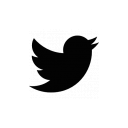Le texte à l’ère du numérique : analyse du concept de genre numérique
Keywords:
Genre numérique, analyse historique, analyse sémantique, analyse instrumentale, analyse épisodiqueAbstract
À l’ère du numérique, la lecture et l’écriture se transforment tant à l’école qu’en dehors de celle-ci (Kalantzis et Cope, 2012; Lebrun, Lacelle et Boutin, 2012; Penloup, 2012). Or, l’apparition d’interfaces d’édition comme Wikipédia renouvelle la notion de genre textuel (ex. : hypertexte informatif ; Hicks, 2013). Cela exige du lecteur une connaissance des caractéristiques des genres traditionnels à laquelle s’ajoute une maitrise d’habiletés de navigation et de lecture non linéaire (Gervais et Saemmers, 2011; Gonçalves, 2014; Vandendorpe, 1999) et multimodale (Lebrun et al., 2012). Le genre numérique (digital genre), loin d’être une simple traduction numérique des genres traditionnels, est un concept d’importance dans le développement d’une didactique des multilittératies. Considérant la diversité des points de vue entourant le phénomène générique actuel, le présent article propose une analyse approfondie du concept de genre numérique en adoptant quatre postures d’analyse différentes : historique, sémantique, instrumentale et épisodique.
Downloads
Published
Issue
Section
License
- Manuscripts submitted to CJNSE/RCJCÉ must be original work that has not been published elsewhere, nor is currently being considered for publication elsewhere. The author should confirm this in the cover letter sent with the manuscript.
- Articles that are published within the CJNSE/RCJCÉ must not be published elsewhere, in whole or part, for one year after publication.
- Copyright for articles published in this journal is retained by the authors, with first publication rights granted to the journal. By virtue of their appearance in this open access journal, articles are free to use, with proper attribution, in educational and other non-commercial settings. Granting the CJNSE/RCJCÉ first publication rights must be in the cover letter sent with the manuscript.
- If the manuscript contains copyrighted materials, the author should note this in the cover letter sent with the manuscript, and indicate when letters of permission will be forwarded to the Editor.
- If the manuscript reports on research with “human subjects,” the author should include a statement in the cover letter that ethics approval has been received for the research, indicating the granting body and protocol number if applicable.
- Authors are encouraged to use language that is inclusive and culturally sensitive.




